Dunes
The beach and dune system is a dynamic environment subject to extensive change as a result of wind, waves, tides and storms. Native salt-resistant vegetation is essential to the beach and dune system, as it both accumulates and stabilizes sand. Vegetation traps wind blown sand that collects around the plant and builds up the dune in a process known as "accretion". As the plants become buried, new roots develop on the recently buried stems while new stems emerge from the sand.
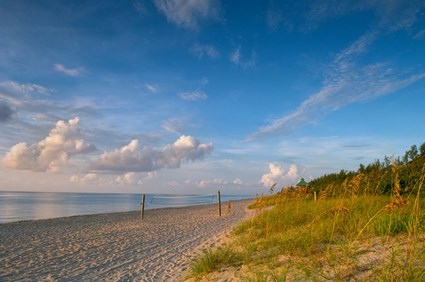
Geomorphology of Coastal Dunes
Depending on the characteristics and availability of the sediment supply, dominant wind velocity and direction, moisture and vegetation present, and the geomorphology of the nearshore and beach face, dunes of various size and morphology are formed. Primary dunes are composed of sand blown directly from the beach face (active beach), whereas secondary dunes develop following the subsequent modification of primary dunes.
Primary Dunes
Primary dunes are dunes with a sand supply derived primarily from the beach and "impeded primary" dunes as those in which vegetation plays a major role (i.e., impedes downwind transport) in the development of the dune. They are the dunes closest to the shoreline, dynamically linked to beach processes, and significantly influenced by wave action as both a constructional and erosional force.
Foredunes
Foredunes develop at the rear of the backshore environments (landward of the active beach) and generally comprise shore-parallel, convex, symmetrical to asymmetrical dune ridges. The morphology of foredunes is varied but they can be classified into three main types: incipient foredunes, established foredunes, and relict foredunes.
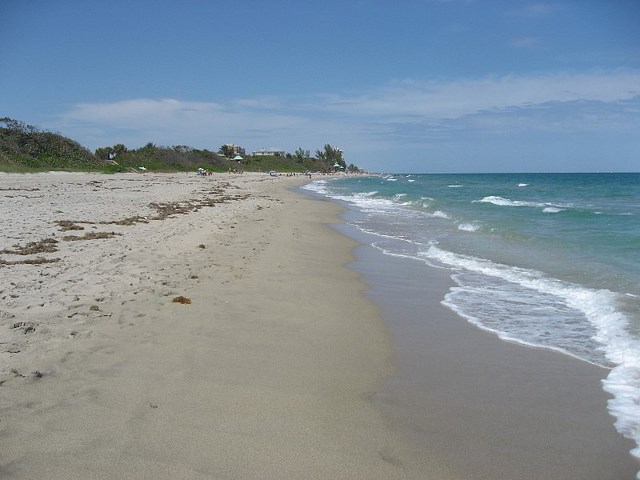
Sand Dune Formation
A sand dune needs the following three things to form:
1. A large amount of loose sand in an area with little vegetation -- usually on the coast or in a dried-up river, lake or sea bed
2. A wind or breeze to move the grains of sand
3. An obstacle that causes the sand to lose momentum and settle. This obstacle could be as small as a rock or as big as a tree.
Where these three variables merge, a sand dune forms. As the wind picks up the sand, the sand travels, but generally only about an inch or two above the ground. Wind moves sand in one of three ways:
1. Saltation: The sand grains bounce along in the wind. About 95 percent of sand grains move in this manner.
2. Creep: When sand grains collide with other grains -- like clay or gravel -- causing them to move. Creep accounts for about 4 percent of sand movement.
3. Suspension: Sand grains blow high in the air and then settle. About 1 percent of sand moves this way. Once it's in motion, sand will continue to move until an obstacle causes it to stop. The heaviest grains settle against the obstacle, and a small ridge or bump forms. Because the obstacle breaks the force of the wind, the lighter grains deposit themselves on the other side of the obstacle. Eventually, the surface facing the wind crests, and the lighter grains of sand cascade down the other side, or the slip face. This is how a sand dune may actually move over time -- it rolls along, maintaining its shape as it goes.
How and why does a sand dune crest? As the wind moves sand up to the top of the sandpile, the pile becomes so steep it begins to collapse under its own weight, and the sand avalanches down the slip face. The pile stops collapsing when the slip face reaches the right angle of steepness for the dune to remain stable. This angle, which scientists call the angle of repose, is usually about 30 to 34 degrees.
After enough sand builds up around an obstacle, the dune itself becomes the obstacle, and it continues to grow. Depending on the speed and direction of the wind and the weight of the local sand, dunes will develop into a different shapes and sizes. Stronger winds tend to make taller dunes; gentler winds tend to spread them out. If the direction of the wind generally is the same over the years, dunes gradually shift in that direction. Any vegetation that crops up will stabilize the dune and prevent it from shifting.
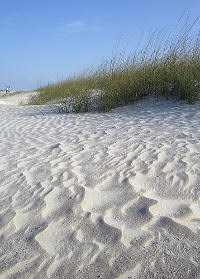
Vegetation
Plants have a major role in dune stability and zone stratification. The vegetation found within Florida's dunes varies and is dependent upon many factors, including storm waves, windblown sand, salt spray, substrate (soil), and climate. Palmettos, morning glories and sea oats are some examples of the plant species found here.
A dense stand of sea oats, and other primary vegetation in the foredune can significantly minimize erosion during high tides and storms. Sea oats are "protected" under regulations of the Florida Department of Environmental Protection (FDEP). Sea oats seeds cannot be collected without a permit and the plants cannot be cut back or removed.
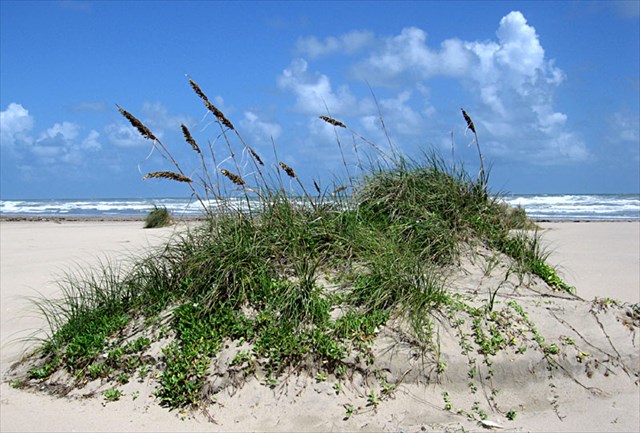
Sea grapes, which grow on the back of the dune and have large ping-pong paddle-shaped leaves, act as a highly efficient barrier to blowing sand and result in significant accretion of the backdune.
Dune Composition and Anatomy
A little over 60% of Florida's coastline is sandy. South Florida's beaches are primarily composed of calcium carbonate sand along southernmost coasts and of quartz sand along northern and central coasts. Dunes are created by wind, but are held in place by grasses that trap sand grains as they are being moved across the beach. Dunes stabilized by grasses protect the coast against winds and pounding waves. Dunes are important reservoirs for sand, replacing sand lost from the beach through erosion. All native dune vegetation should be protected from pedestrian traffic, pruned only as necessary and according to FDEP guidelines, and replanted as necessary to maintain this delicate system.
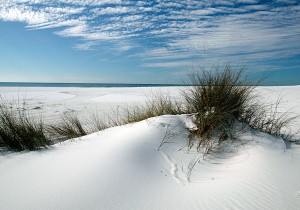
Coastal Sand Dunes in South Florida Barrier Islands
Every sand dune has an important role in the welfare of our beaches. Low, tough plants help stabilize dunes and prevent erosions, while larger dunes act as a sand reserve. Life in the sand dunes among the salt water, winds and waves, may be difficult in this high-energy area, but is vital for the conservation of this valuable ecosystem.
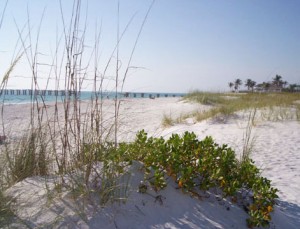
Sand Dunes Are Valuable
Sand dunes are the first line of defense against storms and act as a buffer to protect upland property and natural habitats. They provide a flexible barrier to the movement of high tides and waves, reducing erosion. If sand dunes are damaged or destroyed, homes and coastal resources are more likely to experience storm damage. When sand dunes are damaged from storms or human activity, they can be repaired or restored.

To claim credit for this Earthcache
Please answer the following questions. Email your answers to ikolor at ijkl1@mac.com. Do not post your answers in your log.
1. Coastal sand dunes consist of four zones Name the four zones and a plant that can be found in that specific zone.
2. What is another name for a maritime forest? What zone is this found in?
3. What is the name of the zone sea grapes are found in? What is the importance of sea grapes in dune formation?
4. What has the “back dune” been referred to as?
5. Optional: take a photo of yourself at Ground Zero with the Ocean behind you.